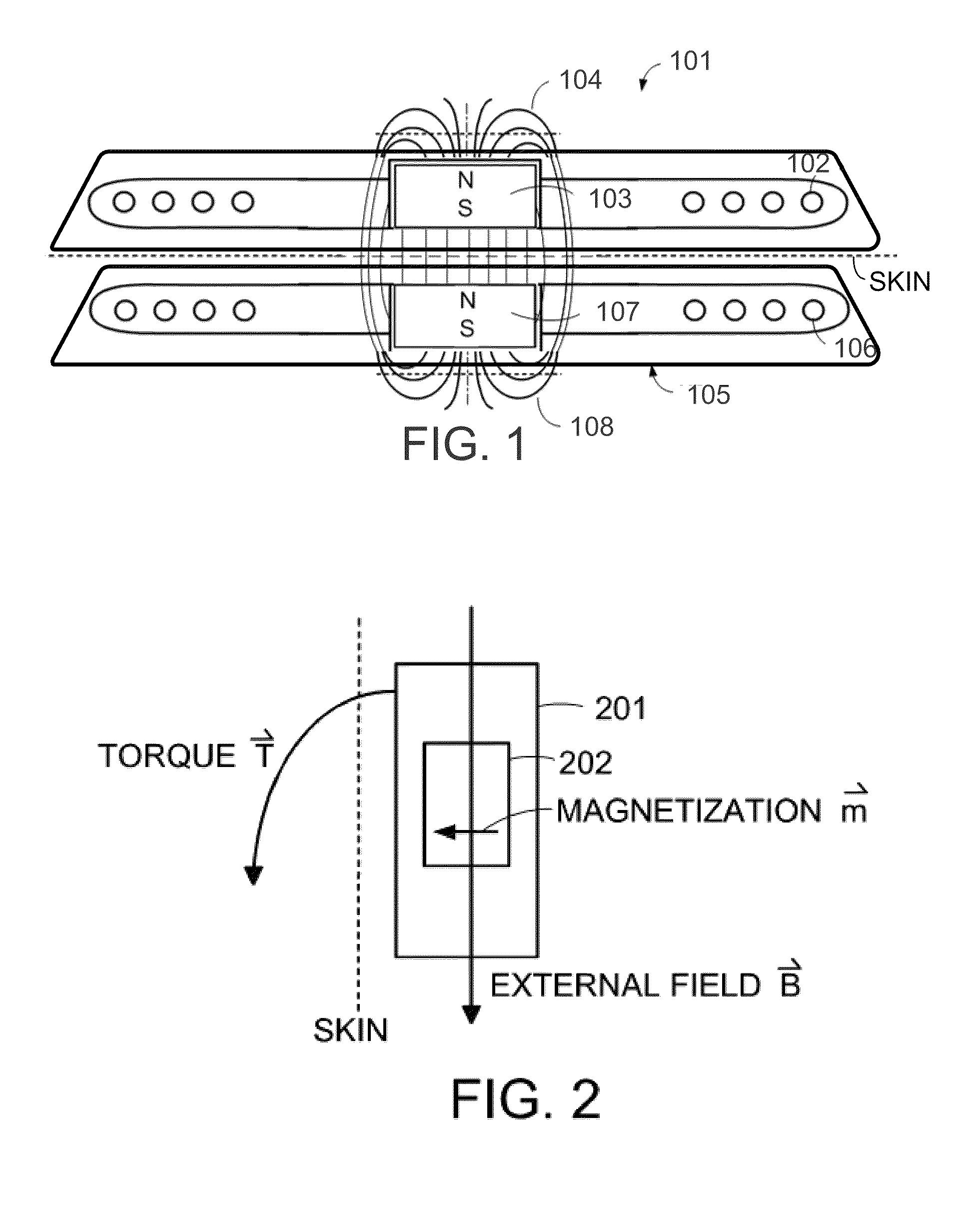MRI-safe disc magnet for implants
a disc magnet and magnetic technology, applied in the field of magnetic elements, can solve the problems of not being strong enough to hold the external transmitter housing in the proper position, damage the adjacent tissue in the patient, and magnetic resonance imaging, so as to reduce friction and promote rotation
- Summary
- Abstract
- Description
- Claims
- Application Information
AI Technical Summary
Benefits of technology
Problems solved by technology
Method used
Image
Examples
Embodiment Construction
[0027]Various embodiments of the present invention are directed to a magnetic arrangement for an implantable system for a recipient patient which is compatible with MRI systems. FIG. 3A shows the magnetic field arrangement in typical existing implant attachment magnets. In this case, the attachment magnet 301 is disk-shaped (i.e., cylindrical) with the north-south magnetic dipole realized in the axial direction as is conventional producing magnetic field lines 302 as shown. Embodiments of the present invention change the direction of magnetization as shown in FIG. 3B so that the north-south magnetic dipole is oriented across the diameter of the attachment magnet 301 parallel to (i.e., “in”) the plane of the coil housing, producing magnetic field lines 302 as shown.
[0028]Of course, with such an arrangement, it is important that both the internal implant receiver attachment magnet and the external transmitter attachment magnet be magnetized with the same orientation in the plane of th...
PUM
 Login to View More
Login to View More Abstract
Description
Claims
Application Information
 Login to View More
Login to View More - R&D
- Intellectual Property
- Life Sciences
- Materials
- Tech Scout
- Unparalleled Data Quality
- Higher Quality Content
- 60% Fewer Hallucinations
Browse by: Latest US Patents, China's latest patents, Technical Efficacy Thesaurus, Application Domain, Technology Topic, Popular Technical Reports.
© 2025 PatSnap. All rights reserved.Legal|Privacy policy|Modern Slavery Act Transparency Statement|Sitemap|About US| Contact US: help@patsnap.com



